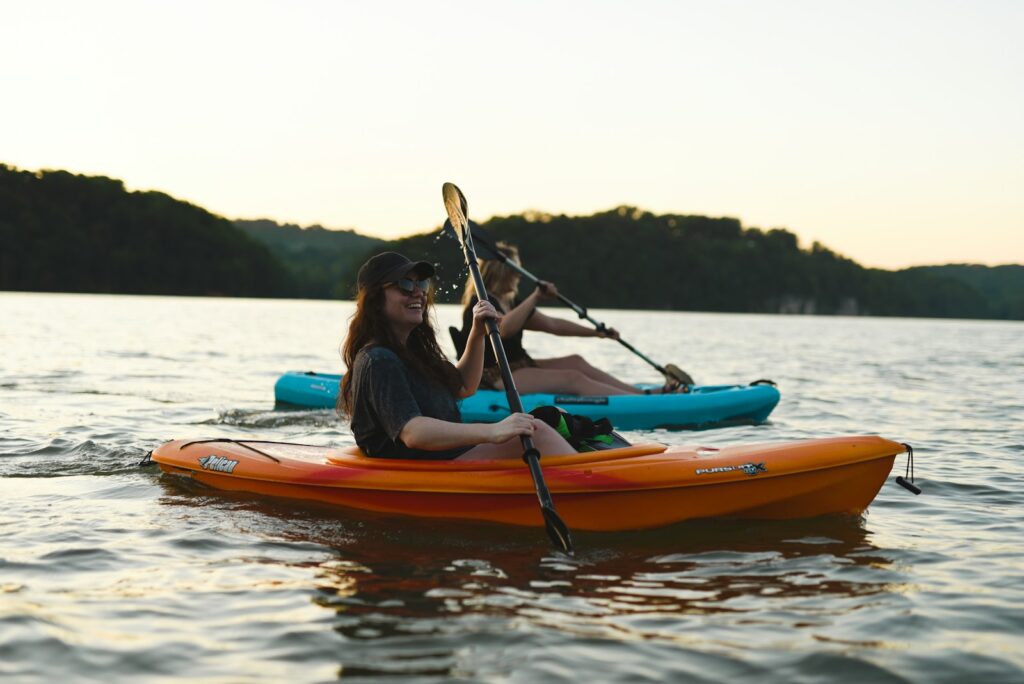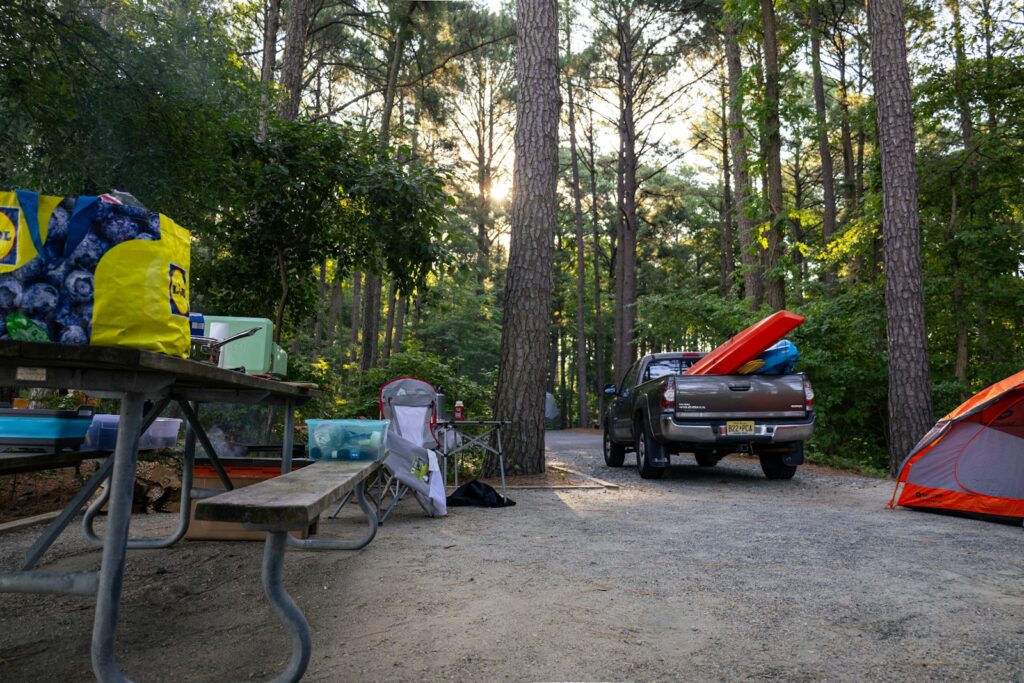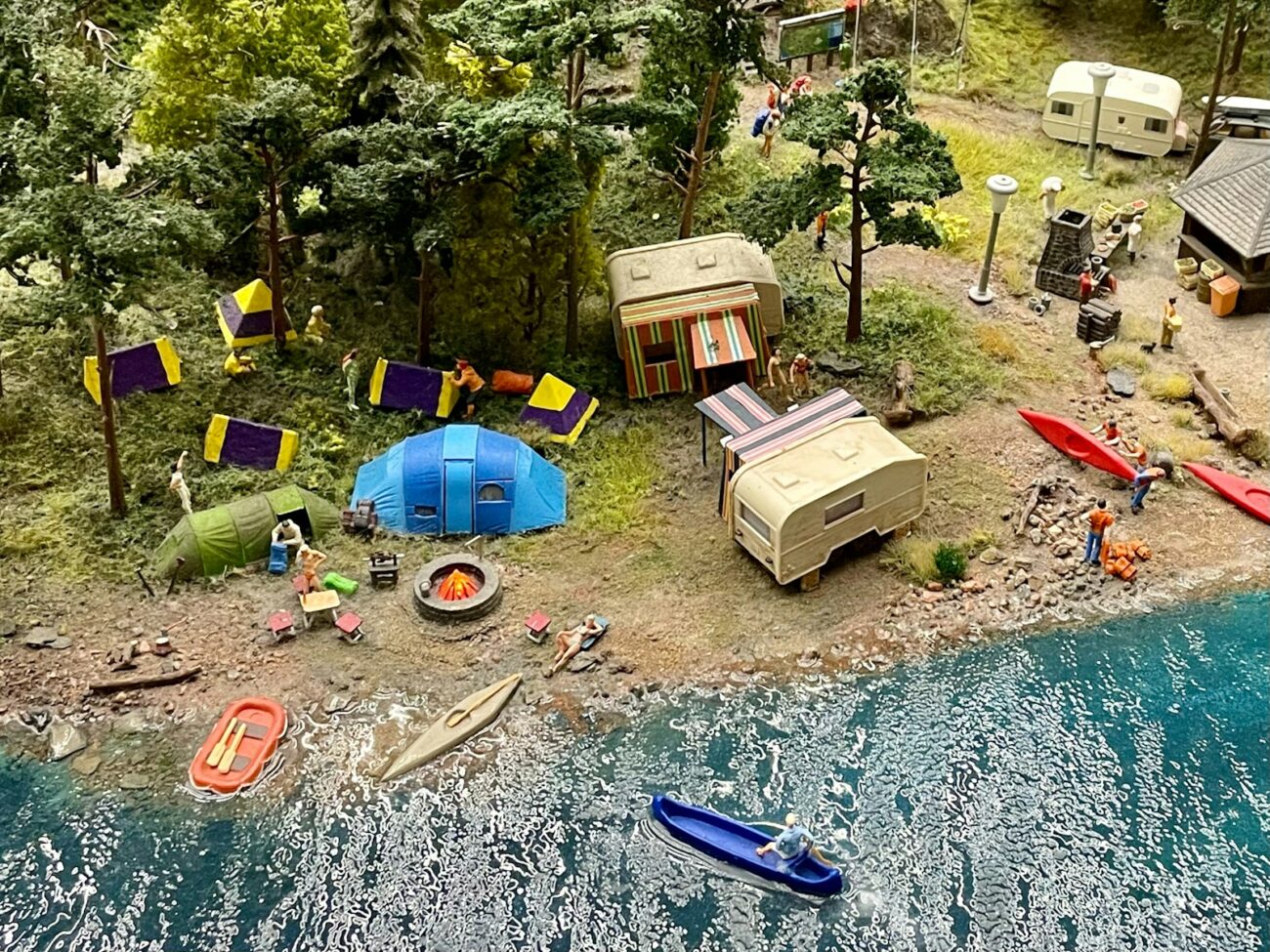Imagine gliding across a pristine lake at dawn, mist rising from the water as you paddle silently toward a distant shore. Your camping gear is stowed securely behind you, and the day ahead promises both adventure on the water and tranquility at your waterside campsite. This is the essence of kayak camping a unique outdoor experience that combines the meditative rhythm of paddling with the soul-nourishing simplicity of camping in remote locations often inaccessible by foot or vehicle. Whether you’re a seasoned paddler looking to extend your adventures overnight or a camping enthusiast eager to explore new territories, kayak camping offers an immersive wilderness experience that connects you deeply with nature’s waterways.
In this comprehensive guide, we’ll navigate everything you need to know to safely and comfortably paddle by day and camp by night.
Understanding Kayak Camping Fundamentals

Kayak camping merges two outdoor activities—kayaking and camping—into one seamless adventure that allows you to access remote locations while carrying all necessary gear with you. Unlike car camping where weight and space limitations are minimal, or backpacking where you’re restricted by what you can physically carry, kayak camping occupies a unique middle ground. Your kayak can transport considerably more weight than your back (typically 250-350 pounds including yourself), but space remains limited and must be packed strategically within your boat’s hatches and on-deck storage areas.
This unique form of wilderness travel requires specialized planning, from selecting appropriate waterproof gear to understanding how to balance and distribute weight in your kayak.The freedom of moving between water and land creates unparalleled opportunities to experience nature from multiple perspectives, making the extra planning well worth the effort.
Choosing the Right Kayak for Overnight Adventures

Not all kayaks are created equal when it comes to overnight trips—the vessel that serves you well for afternoon paddles may prove frustratingly inadequate for camping expeditions. Sea kayaks and touring kayaks are generally the best options for camping trips due to their ample storage capacity, tracking ability, and stability when loaded. Look for boats with sealed bulkheads and watertight hatches that provide both storage space and flotation if you capsize. A kayak between 12-17 feet long typically offers the ideal balance of storage capacity and maneuverability for most paddlers.
Sit-on-top kayaks can work for warm-weather trips but provide less protected storage, while recreational kayaks often lack sufficient capacity for multiple days of gear. When evaluating potential boats, consider not just the stated storage volume but also the accessibility of that storage while on the water and the kayak’s handling characteristics when fully loaded.
Essential Gear for Kayak Camping Expeditions

The gear requirements for kayak camping bridge the worlds of paddling and backcountry camping, with some specialized equipment to address the unique challenges of this hybrid activity. Beyond standard camping equipment (tent, sleeping bag, cooking gear), you’ll need dry bags in various sizes to compartmentalize and protect your gear from water. A reliable paddle float and bilge pump serve as critical safety equipment for self-rescue, while a spray skirt keeps water out of your cockpit during paddling. Navigation tools including a waterproof map case, compass, and possibly a GPS device designed for marine use will help you stay oriented on larger bodies of water.
Clothing should follow the layering principle with an emphasis on quick-drying synthetic materials and quality rain gear, regardless of the forecast. Remember that weight distribution affects your kayak’s handling, so test-pack and possibly test-paddle before committing to a longer journey.
Packing Strategies: Balancing Weight and Accessibility

Efficient packing for kayak camping is both an art and a science, requiring thoughtful consideration of weight distribution, waterproofing, and accessibility. Heavier items should be positioned low and centered in your kayak to maintain stability, while keeping day-use items like snacks, water, sunscreen, and navigation tools within easy reach in the cockpit or on deck. Develop a systematic approach to waterproofing your gear—most experienced kayak campers use a combination of hard waterproof cases for electronics, dry bags of varying sizes for clothing and camp equipment, and garbage bags as additional moisture barriers for sleeping bags and insulating layers. Consider packing similar items together (kitchen gear in one dry bag, clothing in another) to make locating specific gear more efficient at camp.
Many paddlers find that using transparent or differently colored dry bags helps create a visual organization system that prevents frustrating searches through multiple bags for a single item while setting up camp.
Planning Your Route: Factors to Consider

Successful kayak camping trips begin with thoughtful route planning that accounts for paddling distances, potential hazards, and suitable camping locations. When selecting a destination, evaluate your honest paddling abilities and those of your group’s least experienced member—most recreational paddlers comfortably cover 8-15 miles per day, but this varies widely based on conditions and experience. Research water conditions thoroughly, including potential currents, tides, prevailing winds, and exposure to boat traffic, as these factors significantly impact both safety and enjoyment. Identify multiple potential camping options each day to provide flexibility if weather changes or your group progresses faster or slower than anticipated. Many paddlers find that planning an “escape route” with potential take-out points along the journey provides peace of mind in case of equipment failure or changing conditions.
Remember that paddling speeds decrease substantially when fighting headwinds or currents, so build conservative time estimates and buffer days into longer itineraries.
Water Safety and Navigation Skills

Kayak camping requires a more comprehensive set of water safety and navigation skills than day paddling, as you’ll likely encounter more varied conditions and have fewer opportunities for assistance if problems arise. At minimum, all participants should be comfortable with wet exits (safely exiting the kayak if it capsizes), basic rescue techniques, and confident paddling in conditions rougher than those expected on your trip. Navigation on water presents unique challenges—landmarks appear different from water level, and features visible on maps may not be readily apparent when paddling. Learning to use a marine compass, read nautical charts if applicable, and track your position regularly prevents disorientation, particularly in foggy conditions or on large bodies of water with similar-looking shorelines.
If your trip includes ocean paddling, understanding tidal currents and planning crossings at slack tide can make the difference between an enjoyable paddle and a dangerous struggle against natural forces.
Finding and Setting Up Camp: Waterside Considerations

Campsite selection for kayak camping involves unique considerations beyond those of traditional backpacking, particularly regarding landing sites and water-level changes. Look for protected coves or beaches with gradual slopes that allow safe landing and launching, avoiding areas with large rocks or strong surf that could damage your kayak or make launching difficult. Always secure your kayak well above the high-water mark, accounting for potential overnight water level changes due to tides or dam releases on rivers. When possible, position your kayak perpendicular to the shoreline and tie it to a fixed object to prevent it from floating away during unexpected water rises. Set up your camp with water access in mind—create a “staging area” near your boats for drying gear and organizing equipment, but position your sleeping area on higher ground that won’t be affected by rising water.
In locations with bears or other wildlife, follow proper food storage protocols, which may require hanging food bags from trees or using specialized kayak camping bear canisters.
Cooking and Food Planning for Water-Based Adventures

Food planning for kayak camping offers both unique challenges and distinct advantages compared to backpacking. The increased carrying capacity of kayaks allows for heavier, fresher food options including cooler-stored items for the first few days of longer trips. Focus on efficient meal planning that minimizes waste packaging and utilizes ingredients across multiple meals to save space. Many experienced kayak campers adopt a hybrid approach to food—freeze-dried meals for simplicity complemented by fresh ingredients for improved taste and nutrition. Consider the limitations of cooking at remote water-access sites, which may lack established fire rings or have fire restrictions; compact camp stoves with stable bases work best on the uneven surfaces often found at water’s edge. Water filtration or purification deserves special attention, as many paddling destinations feature abundant water but require treatment before consumption.
Remember that your food storage needs may need to address both wildlife concerns and keeping items dry in the humid environment typical of waterside camping.
Weather Awareness and Trip Flexibility

Weather impacts kayak camping more significantly than many land-based outdoor activities, making weather awareness and adaptability essential skills for paddlers. Wind conditions particularly affect kayakers—winds exceeding 15 knots create challenging paddling conditions for most recreational kayakers, while winds over 20 knots can make progress impossible or dangerous even for experienced paddlers. Develop the habit of checking detailed marine or lake forecasts before launching each day, paying particular attention to wind direction relative to your planned route and potential thunderstorm development. Build flexibility into your itinerary with “weather days” that allow you to stay put during unfavorable conditions rather than risking dangerous water crossings. Learn to recognize changing weather patterns from natural indicators like cloud formations, sudden temperature changes, or shifting wind directions.
Unlike hiking where you might push through brief showers, water-based travel demands greater caution—the consequences of capsizing in remote locations with a boat full of camping gear are potentially severe.
Leave No Trace: Environmental Ethics for Water Travelers

Practicing Leave No Trace principles takes on additional dimensions for kayak campers, who often access pristine shorelines and islands where environmental impact is both more visible and potentially more damaging. Special attention must be paid to human waste management, as many water-access campsites lack established facilities and may have limited suitable locations for catholes due to proximity to water or thin soil. Carrying a portable toilet system or specialized kayak camping waste bags allows you to pack out waste from sensitive environments. When selecting campsites, concentrate activity on durable surfaces and avoid trampling sensitive shoreline vegetation that prevents erosion and provides crucial habitat. Washing dishes and yourself requires additional care near water—use biodegradable soap sparingly and always at least 200 feet from water sources, filtering or straining food particles and dispersing gray water widely.
Remember that sound travels exceptionally well across water, so practicing “sound courtesy” by keeping voices and music at reasonable levels preserves the wilderness experience for wildlife and fellow paddlers alike.
Solo vs. Group Kayak Camping: Safety Considerations

The decision to paddle solo or with a group fundamentally shapes your kayak camping experience, with each option offering distinct advantages and challenges. Group trips provide built-in safety redundancy through shared equipment, mutual assistance in difficult conditions, and help with rescues if needed. Communication protocols become essential in groups—establish clear hand signals for on-water communication and decision-making processes for weather calls or route changes. Solo kayak camping offers unparalleled solitude and flexibility but requires more comprehensive self-rescue skills, equipment redundancy, and conservative decision-making. Solo paddlers should leave detailed float plans with reliable contacts, including planned routes, expected check-in times, and emergency response instructions if you fail to check in. Technology can bridge some safety gaps for solo paddlers—personal locator beacons (PLBs) or satellite communicators provide emergency communication ability in areas without cell coverage.
Whether traveling alone or in groups, always paddle within your skill level and recognize that remoteness amplifies the consequences of even minor incidents.
Advanced Skills: Multi-Day Trip Management

Extended kayak camping trips lasting several days or weeks require additional skills beyond those needed for weekend adventures, particularly regarding resource management and psychological preparedness. Water management becomes critical on longer journeys—knowing where reliable water sources exist along your route and carrying appropriate filtration capacity prevents both dehydration and unnecessary weight from excessive water carrying. Battery power for essential devices requires careful planning; consider solar chargers for extended trips or strategic use of devices to conserve power. Physical conditioning plays a larger role in longer journeys, as the cumulative fatigue of daily paddling combined with camp chores can lead to exhaustion or increased injury risk. Develop systems for efficient camp setup and breakdown that conserve energy and minimize time spent on repetitive tasks.
Perhaps most importantly, longer trips demand mental resilience—the ability to maintain positive attitude through challenging weather days, equipment failures, or interpersonal tensions if traveling with companions.
Seasonal Considerations and Destination Selection

The ideal kayak camping experience varies dramatically by season and location, requiring paddlers to match their skills and equipment to appropriate destinations throughout the year. Summer offers the most forgiving conditions for beginners with warmer water, longer daylight hours, and typically milder weather patterns in most regions. Spring and fall provide fewer crowds and often stunning scenery, but require more comprehensive insulation strategies both on water and in camp, plus the ability to handle potentially stronger weather systems. Winter kayak camping, attempted only by experienced paddlers with specialized cold-water gear, presents serious hypothermia risks but rewards the prepared with unparalleled solitude. When selecting destinations, consider water temperature as a primary safety factor—immersion in water below 60°F triggers cold water shock and quickly impairs swimming ability and judgment, making rescue skills and proper immersion protection essential.
Many paddlers progress from protected inland lakes to more challenging coastal environments as they develop skills and acquire appropriate gear, recognizing that open water introduces complexities of navigation, weather exposure, and tide management that require additional expertise.
Building Your Kayak Camping Experience Progressively

Like any wilderness skill, kayak camping proficiency develops through progressive experience rather than immediate mastery. Begin with shorter overnight trips on familiar, protected waters to test your systems and identify gear gaps without significant consequences. Consider joining guided trips or paddling clubs where you can learn from experienced kayak campers who have refined their systems through years of trial and error. After each trip, conduct a thorough evaluation of what worked well and what could be improved—many paddlers keep a kayak camping journal noting specific gear successes and failures, meal hits and misses, and route observations that prove invaluable for future planning. Gradually extend your range and challenge level as your skills and confidence grow, perhaps progressing from single overnights to weekend trips, then week-long adventures, and eventually extended expeditions if desired.
Remember that the objective is enjoyable wilderness travel, not endurance contests—finding your personal balance of challenge and comfort creates sustainable enthusiasm for the unique blend of paddling and camping that defines this rewarding outdoor pursuit.
Conclusion

Kayak camping represents the perfect synthesis of water and land travel, offering unique access to wilderness areas while fostering deep connection with aquatic environments. The rhythmic meditation of paddling by day gives way to the primal satisfaction of making camp by night, creating a journey that engages all senses and challenges both body and mind. While the learning curve may seem steep initially, each trip builds competence and confidence while revealing new possibilities for exploration. Whether you’re seeking solitude on a remote island, hoping to spot wildlife from a unique vantage point, or simply looking to expand your outdoor repertoire, kayak camping offers rewards well worth the investment in skills and equipment.
As you develop your personal systems and preferences, you’ll discover that the journey between water and shore becomes not just a means of travel, but a profound way of experiencing the natural world on its own terms.

